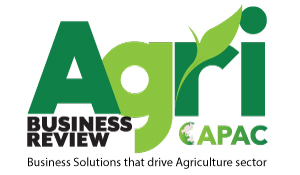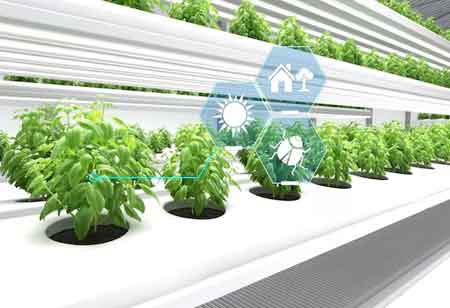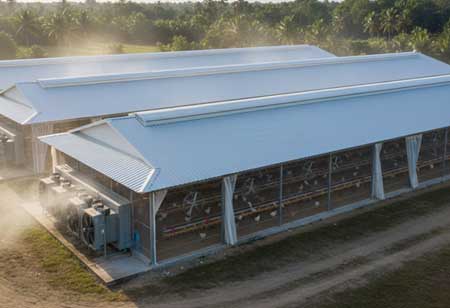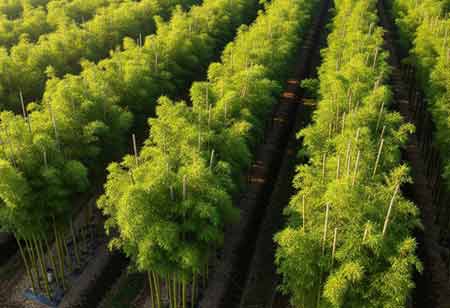Thank you for Subscribing to Agri Business Review Weekly Brief
GROWING FEED INDOORS A SOLUTION FOR YOUR CATTLE OPERATION?
In the lead of his session, Localizing and Scaling Sustainable, Nutritious Animal Feed, at the 2022 Animal AgTech
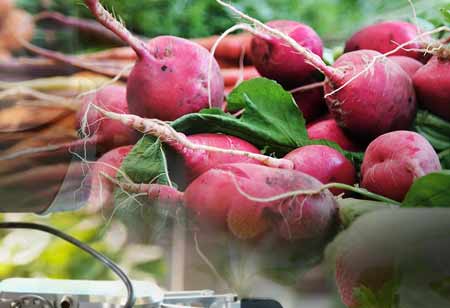
By
Agri Business Review | Monday, March 28, 2022
Stay ahead of the industry with exclusive feature stories on the top companies, expert insights and the latest news delivered straight to your inbox. Subscribe today.
What if daily on the farm where a perfect day for seeds to grow and reach their full potential? By originating a system that generates nutritious livestock feed ingredients indoors. It is an environment HydroGreen is making a reality.
In the lead of his session, Localizing and Scaling Sustainable, Nutritious Animal Feed, at the 2022 Animal AgTech Innovation Summit, HydroGreen's Thierry Perrotin shares how technology is revolutionizing the way producers grow feed for their animals. In its 4th year, the Animal AgTech Innovation Summit returns to San Francisco on March 21, 2022. The day-long event will concentrate on innovation in animal health, nutrition, and precision farming, confronting the pain points and opportunities at the center of the livestock and dairy industries.
BORN OUT OF NECESSITY
Just like many innovations, out of necessity, HydroGreen was created. When limited rainfall made supplying feed for his cattle a challenge, particularly when competing with neighboring dairies for quality feed, Dihl Grohs evolved a sustainable substitute for producing feed that requires low maintenance.
Powered by hydroponics, the rancher's completely automated system grows nutrient-rich feed ingredients, like barley and wheat, year-round in a controlled environment with minimal land, labor, and water use. HydroGreen carries out all growing functions with a button, including seeding, watering, lighting, harvesting, and reseeding. Automated Vertical Pastures with 12 modules holding less than 1 acre produce the same amount of fresh forage as 500 acres of conventional growing.
The system can produce barley and wheat for six days from seed to feed. But, the vice president of business development at HydroGreen, Perrotin, says people wonder why they don't wait seven days. "A sprouting grain reaches its peak nutritional value at six days."
Since complex starches convert into easily digestible sugars and starches, HydroGreen also helps better ration digestibility. "Hydrolytic enzymes arising naturally in the plant dramatically increase the digestibility and absorption of nutrients and the overall diet," he explains. "For instance, HydroGreen aid cows improve fiber digestion by 10% from ordinary performance levels; As feed used efficiently, will also reduce waste."
MODULAR AND SCALABLE
The company's Automated Vertical Pastures are flexible and scalable for smaller and larger herd sizes. Both will install in a controlled, indoor environment. The model and number of units you require will depend on the size of your operation and the amount of feed needed daily by each animal.
For small herds, the DGS 66 module is six levels high and intended to harvest one level per day, with each level producing about 650 pounds of dry matter per day, year-round, in any climate. This module is best for medium-sized dairy farms and ranches with approximately 100 to 300 head of cattle.
The GLS 808 has eight levels arranged to be fully harvested each day for larger herds. This unit helps large, commercial-scale dairy farms and ranches. Based on the configuration, Perrotin says it takes about two hours to unload feed from an entire GLS 808. Modules plan in multiples of six and six GLS 808 modules can produce about 8,000 pounds of dry matter per day.
The company provides indoor growing technology, but it also assists with all aspects of the installation. Perrotin says experts will be with you from the building design to HVAC requirements every stage of the way.
"Established, a GLS 808 costs around $300,000; still, you also required the envelope (infrastructure) to go around it," he says. "Controlled by the existing buildings an operation has, it takes about five to seven years to perceive aback on your investment."
CREATING AUTOMATED VERTICAL PASTURES
By joining 12 GLS 808 modules, the company supports Burnett Land & Livestock in Wyoming to produce enough fresh feed to supplement the ration of up to 2,000 cows.
"The 12 modules of our Automatic Vertical Pastures replace 500 acres of farmland while using 95% less water than conventional livestock feed grown in irrigated fields," Perrotin says.
A recycling system to conserve the water uses the setup also equipped. "It will offer that water two to three more applications on the farm," Perrotin said.
As HydroGreen keeps growing, it is building its dealership network. Channel partners to circulate their products," Perrotin says. "We are concentrating on the western side of the United States because that's where many headaches with water are. We have about 100 units under agreement with these dealers.
While the technology provides myriad benefits, like anything that needs change, there is resistance. "Ag-tech is no more a nice-to-have, it's a necessity, and HydroGreen is a considerable technology for farmers and ranchers," he says. "We are making a nutritious feed rich in enzymes, but we are also pursuing the latest protocols with laser methane devices to gauge emissions. As a result, we noticed around 20% fewer methane emissions from cows fed with HydroGreen than those fed a traditional ration."
Over change management, Perrotin says finding the right people to grow and scale the business can also be complicated. "An event such as the Animal AgTech Innovation Summit has great value to a company like ours because it allows us to build stronger connections and introductions we may not have found on our own," he says.
